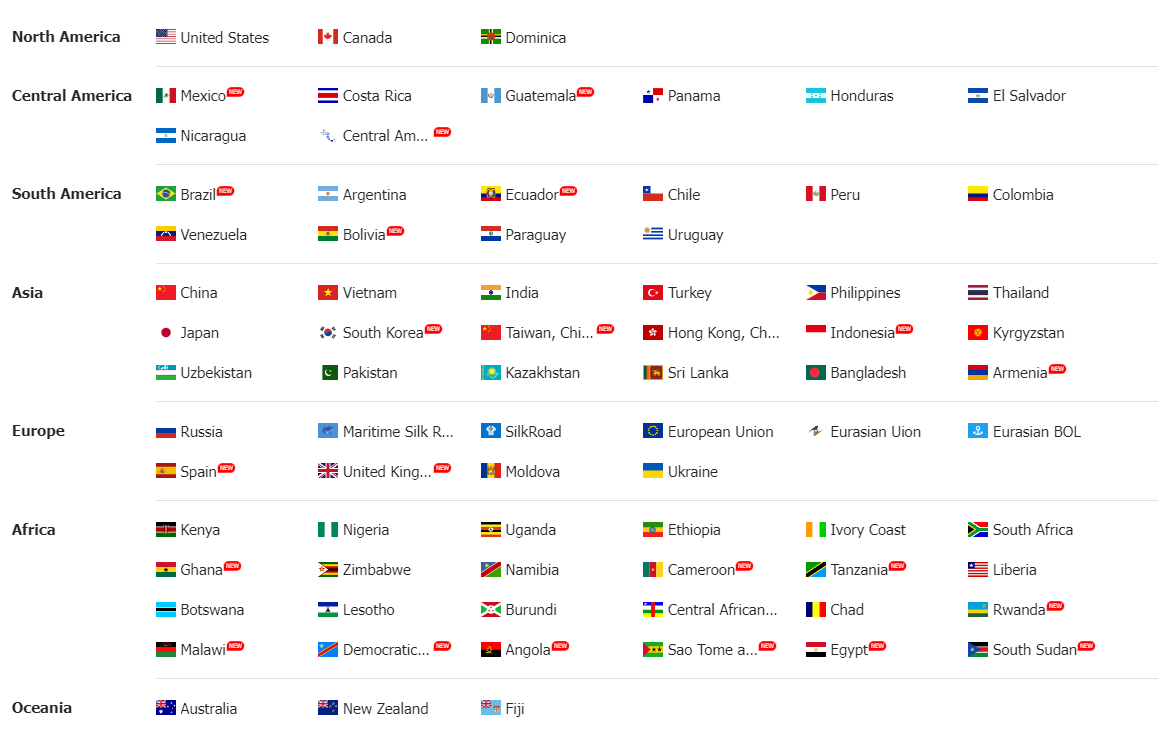 Trade Data
Trade Data
 2024-06-18
2024-06-18
Import export data is a treasure trove of information for businesses involved in international trade. By analyzing this data, companies can gain valuable insights into market trends, competitive landscapes, and potential business opportunities. This article will guide you through the various ways to effectively use import export data to enhance your business strategy and operations.

Understanding Import Export Data
Import export data includes detailed records of goods moving across international borders. These records are collected by customs authorities and typically include information such as:
Product Descriptions: Detailed descriptions of the traded goods.
1.HS Codes: Harmonized System codes that classify products.
2.Quantities and Values: The amount and monetary value of the goods.
3.Trade Parties: Information about exporters and importers, including their names and countries.
4.Ports of Entry and Exit: The locations where goods are shipped from and to.
5.Shipping Details: Information about the transport mode, carrier, and shipment dates.
How to Use Import Export Data
1.Market Analysis and Entry Strategies
Identify Market Trends: By analyzing import export data, businesses can identify trends in product demand, seasonal fluctuations, and emerging markets. For example, a spike in imports of a particular product in a region may indicate increasing demand.
Competitive Analysis: Evaluate your competitors' activities by examining their export volumes, destinations, and product lines. Understanding where and what your competitors are exporting can help you strategize your market entry and positioning.
Assess Market Size: Determine the size and growth potential of a market by analyzing the volume and value of imports and exports. This helps in making informed decisions about which markets to enter or exit.
2.Supplier and Buyer Identification
Find Reliable Suppliers: Use export data to identify leading exporters of the products you need. This can help you find reliable suppliers with a proven track record.
Locate Potential Buyers: Import data can help you identify companies that import products similar to yours. These companies are potential buyers and partners for your business.
Build Relationships: Establish contact with identified suppliers and buyers to explore potential partnerships. Having detailed information about their trade activities can give you an edge in negotiations.
3.Pricing Strategy
Analyze Pricing Trends: Track the prices at which goods are being imported or exported. This helps in understanding the market price range and setting competitive prices for your products.
Cost Management: Understand the costs involved in importing goods from different regions, including duties, taxes, and shipping costs. This information is crucial for managing your overall cost structure.
4.Supply Chain Optimization
Identify Efficient Routes: Analyze shipping details to identify the most efficient routes and methods of transportation. This can help reduce shipping times and costs.
Risk Management: Use data to identify potential risks in the supply chain, such as political instability or logistical challenges in certain regions. Having this information allows you to develop contingency plans.
5.Regulatory Compliance
Stay Informed: Keep abreast of changes in trade regulations, tariffs, and duties by analyzing trade data. This ensures compliance with international trade laws and avoids costly penalties.
Product Classification: Ensure accurate product classification using HS codes from the data. Correct classification is crucial for tariff calculations and regulatory compliance.
6.Sales and Marketing Strategies
Targeted Marketing: Use data to understand the preferences and demand patterns in different markets. Tailor your marketing strategies to meet the specific needs of each market.
Demand Forecasting: Predict future demand for your products based on historical import and export trends. This helps in planning production and inventory levels.
7.Investment Decisions
Market Viability: Assess the viability of investing in new markets or expanding in existing ones by analyzing trade volumes and growth trends.
Resource Allocation: Allocate resources more effectively by focusing on markets and products with the highest potential for growth.
Conclusion
Import export data is a powerful tool that can provide businesses with a wealth of information to make informed decisions. By leveraging this data for market analysis, supplier and buyer identification, pricing strategy, supply chain optimization, regulatory compliance, and sales and marketing strategies, companies can enhance their competitive edge in the global market. Properly analyzing and utilizing import export data not only helps in understanding the current market landscape but also in forecasting future trends, ensuring long-term business success.
Tendata iTrader aggregates trade data from 218 countries and detailed information on over 130 million import-export enterprises worldwide.
With a daily provision of 10 billion trade records, Tendata swiftly offers contact details of over 700 million top-level executives and decision-makers of import-export enterprises through intelligent filtering, including email addresses, phone numbers, social media profiles, and more. Additionally, we synchronize company profiles, product images, and website links, while providing 19 types of visual reports to assist foreign trade enterprises in precise market positioning and in-depth market analysis, helping you quickly locate the precise purchasers and suppliers you need.
(>>Check the Official Shanghai Tendata Website for More Details <<)

Category
Leave Message for Demo Request or Questions


 T-info
T-info T-discovery
T-discovery

 My
Tendata
My
Tendata Market Analysis
Market Analysis Customer
Development
Customer
Development Competitor
Monitoring
Competitor
Monitoring Customer Relationship
Customer Relationship





































































































































